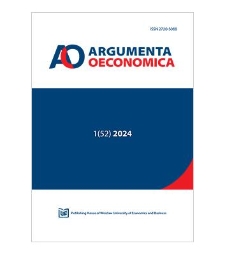Object
Title: An epidemic and economic growth. A medium-term perspective
Creator:
Bolińska, Monika ; Dykas, Paweł ; Tokarski, Tomasz ; Wisła, Rafał
Description:
Argumenta Oeconomica, 2024, Nr 1 (52), s. 18-36
Abstrakt:
Publisher:
Publishing House of Wroclaw University of Economics and Business
Place of publication:
Date:
Resource Type:
Resource Identifier:
doi:10.15611/aoe.2024.1.02 ; oai:dbc.wroc.pl:126394
Language:
Relation:
Argumenta Oeconomica, 2024, Nr 1 (52)
Rights:
Pewne prawa zastrzeżone na rzecz Autorów i Wydawcy
Access Rights:
Dla wszystkich zgodnie z licencją
License:
CC BY-SA 4.0
Location:
Group publication title:
Object collections:
- Lower Silesian Digital Library > Participants of the Consortium > 04. Wroclaw University of Economics > Periodicals published by the University Publishing House > Argumenta Oeconomica
- Lower Silesian Digital Library > Resources > 2. Czasopisma > Czasopisma współczesne
Last modified:
Apr 26, 2024
In our library since:
Apr 26, 2024
Number of object content hits:
10
All available object's versions:
https://www.dbc.wroc.pl./publication/165312
Show description in RDF format:
Show description in OAI-PMH format:
| Edition name | Date |
|---|---|
| An epidemic and economic growth. A medium-term perspective | Apr 26, 2024 |
Similar
Bolińska, Monika Dykas, Paweł Wisła, Rafał
Herman, Sergiusz Lach, Bartłomiej
Biernacki, Marek
























